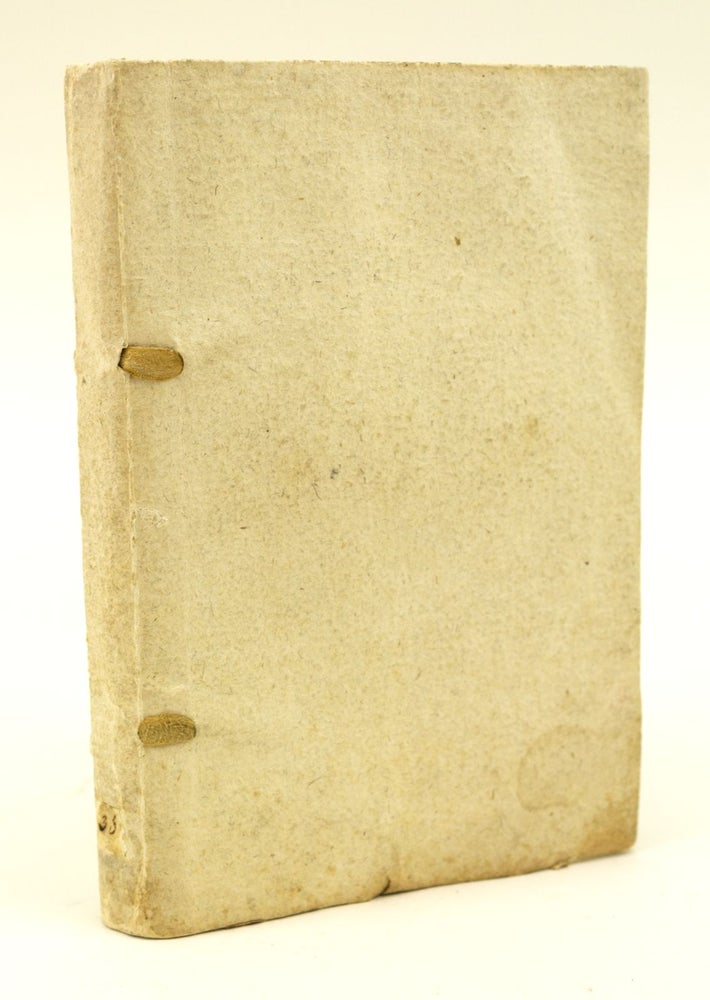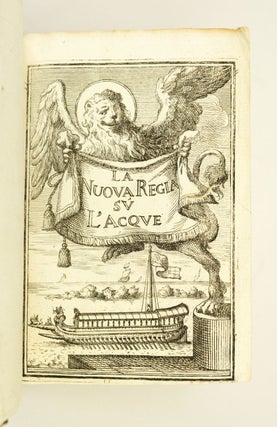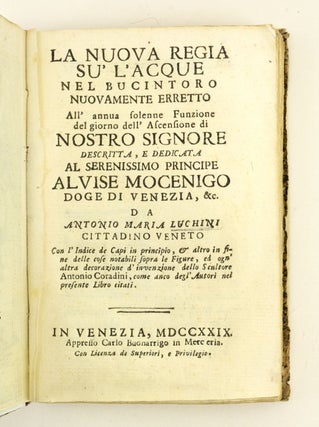LA NUOVA REGIA SU L'ACQUE NEL BUCINTORO NUOVAMENTE ERETTO.
(Venezia [Venice]: Appresso Carlo Buonarrigo, 1729). 155 x 105 mm. (6 1/8 x 4 1/8). [1] p.l. (extra engraved title), 122 pp. FIRST EDITION.
Original cream-colored wrapper of heavy paper, silk ribbon stitching, remnants of old shelf label at foot of spine. Extra engraved title page depicting the Bucinotoro in all its glory, surmounted by the Lion of St. Mark, emblem of Venice. Front pastedown with bookplate of the duke of Arenberg, Castle Nordkirchen. Cicognara 4369. ◆Binding lightly soiled, front pastedown lifting, occasional faint yellowing to margins, other trivial imperfections, but still A VERY FINE COPY--clean, bright, and especially fresh, in its remarkably well-preserved (fragile) binding.
This is a detailed account of the magnificent Bucintoro—a ceremonial ship used in the annual ritual in which the Doge of Venice was symbolically wedded to the sea— unveiled in 1729. The city known as La Serenissima had long been a major port for trade between Europe and points East, and the people honored the role played by the Mediterranean Sea in the Republic's prosperity. Beginning in 1311, the head of state sailed forth each year on Ascension Day to be "married" to the sea, aboard a boat called the Bucintoro. The wooden ship was restored or rebuilt from time to time through the centuries, and in 1719 the Venetian Senate commissioned a brand new vessel, to be richly ornamented and even bedecked with gold.
Our volume describes the process by which the finest artists and artisans of the day--from shipbuilders to sculptors and painters--created the largest and most lavish Bucintoro in history. The engraved title page shows the stately craft in full rig, banners flying, as Doge Alvise Mocenigo is rowed out to meet his marine bride. Cicognara notes the volume's value in preserving for posteriority these memories of Italian greatness--and that greatness lasted only a relatively short time, because after the fall of the Venetian Republic in 1797, Napoleon had the Bucintoro stripped of its finery. The denuded and humiliated ship was then used by the Austrian navy until 1824, sailing under the name "Hydra."
The presence of a binding identical to ours on several copies in sales records suggests that these may have been the publisher's original wrappers, which have weathered the years surprisingly well. The text here is deeply impressed on thick paper, upholding the fine tradition of Venetian printing. (ST16379-042)
Price: $1,800.00



